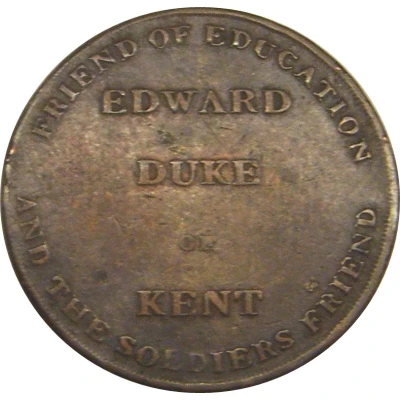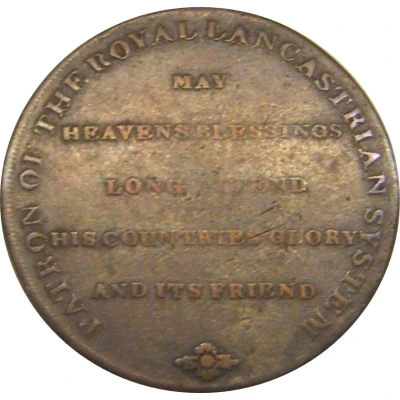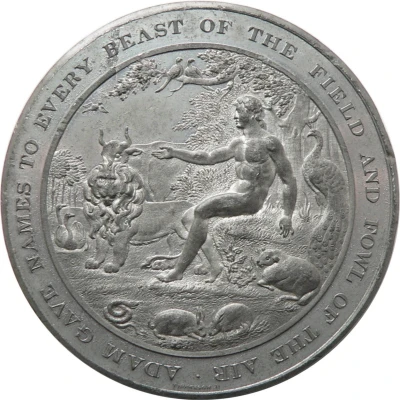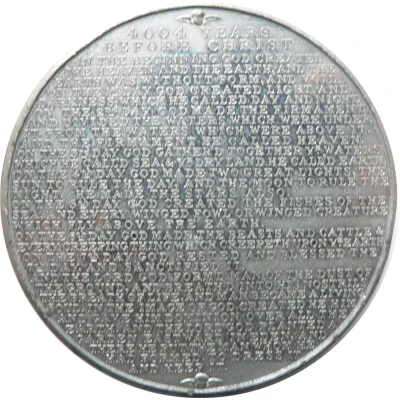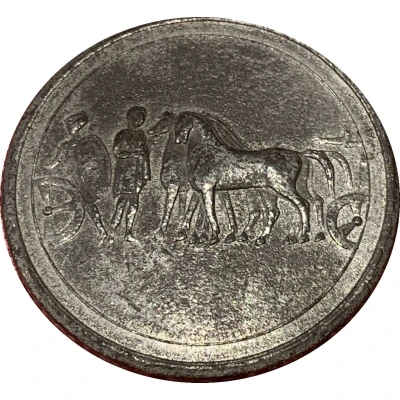
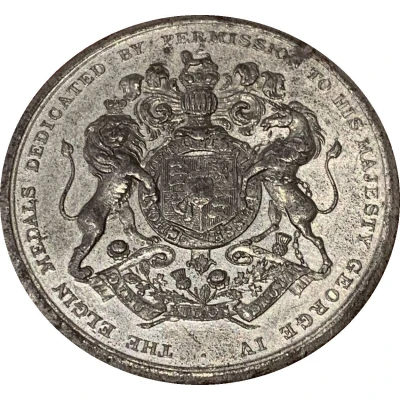

© ZacUK
Elgin Medal ND
| (White metal) | 32.985 g | 47 mm |
| Location | United Kingdom (United Kingdom, British Overseas Territories and Crown Dependencies) |
|---|---|
| King | George IV (1820-1830) |
| Type | Medals › Commemorative medals |
| Composition | (White metal) |
| Weight | 32.985 g |
| Diameter | 47 mm |
| Shape | Round |
| Updated | 2024-11-14 |
| Numista | N#307425 |
|---|---|
| Rarity index | 97% |
Reverse
The crowned and helmeted Royal coat-of-arms within Collar of the Order of St. George, inscribed HONI SOIT QUI MAL Y PENSE (the motto of the Order: evil be to he who evil thinks); lion and unicorn as supporters; below, thistle, rose, shamrocks, and leaks (representing Scotland, England, Ireland, and Wales) within banner inscribed DIEU ET MON DROIT (the divine right).
Script: Latin
Lettering:
THE ELGIN MEDALS DEDICATED BY PERMISSION TO HIS MAJESTY GEORGE IV
DIEU ET MON DROIT
Comment
Date Range: 1820 - 1830Issuer: Edward Thomason
Note: A piece of set of 48: presentation of Elgin Marbles to British Museum issue.
Some of the series ...
Belonging to the Car of Night
Caryates
Castor Pollux Ceres and Triptolemus
Cupid
Hyperion
Ilyssus
Sacrifice
The Centaur
The Centaur Victorious
The Chief carrying off the Bride
The Fates
The God of Day
The Iris
The Lapitha and Centaur
The Lapitha pulling the Centaur over
The Lapitha pushing the Centaur backwards
The Lapitha subdued by the Centaur
Theseus
In 1798, Thomas Bruce, Earl of Elgin and ambassador to the Ottoman Empire, examined the friezes adorning the ancient Parthenon on the Akropolis in Athens with the intent to make plaster casts and bring them back to Britain. However, on finding that the sculptures were periodically removed and burned to obtain lime, he began removing them himself and preparing them for transport. Elgin obtained questionable permission from local Ottoman officials and the friezes were sent to Britain, where they were put on display in the British Museum. They remain there today despite the protestations of the Greek government.
